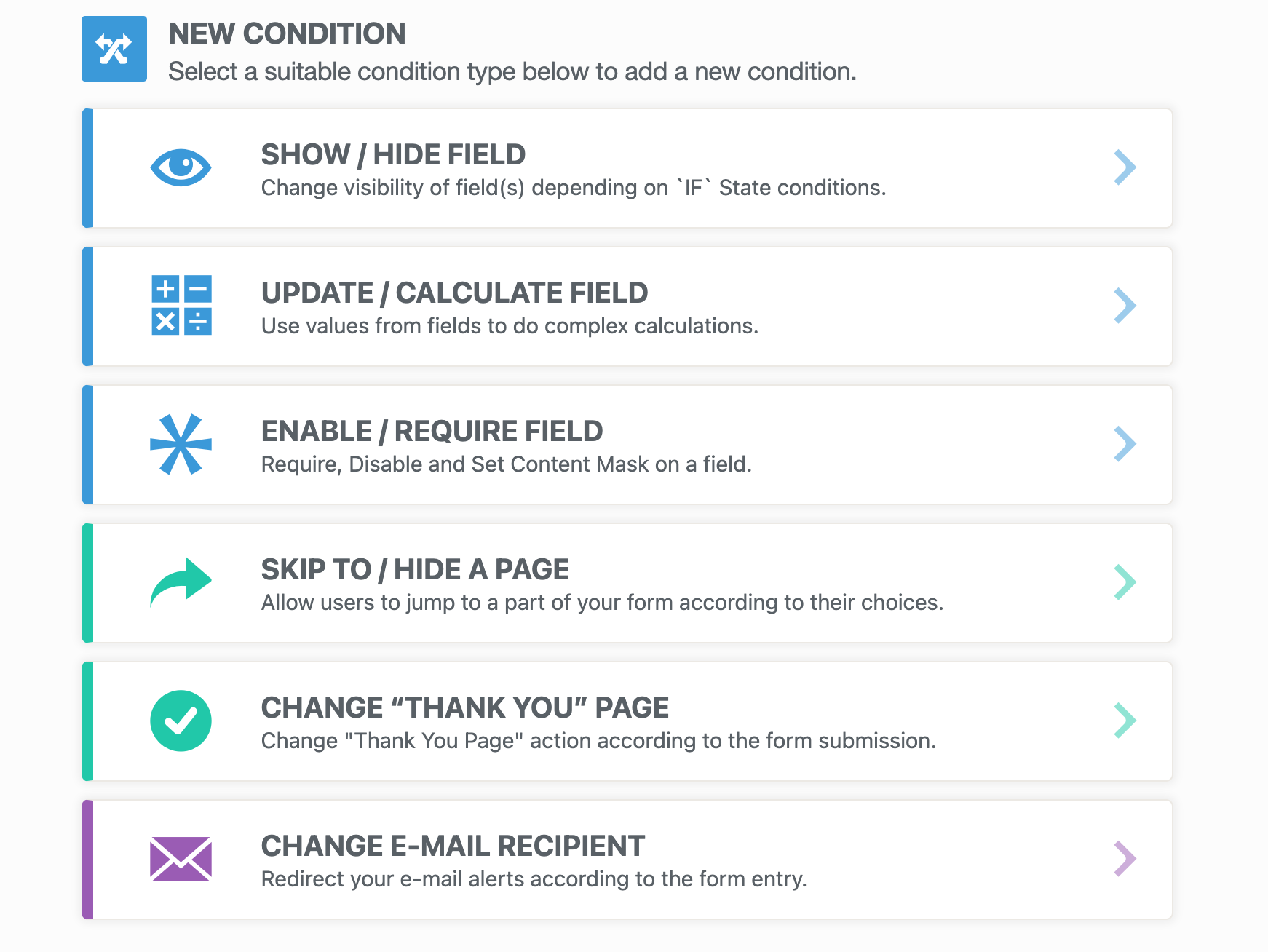Surveys are an important part of getting the customer feedback that’s critical to long-term business success — which is why so many businesses send them out. With so many surveys flooding user inboxes, it’s important that yours is one people actually want to fill out.
Survey logic makes that possible. By creating responsive, intelligent surveys, you can ensure respondents don’t get overwhelmed or frustrated before they get to the end.
Just so you know
Learn how to make a survey with our free and complete guide — and see how you can get started with Jotform!
How does survey logic work?
Every questionnaire should have a logical sequence to it. With online surveys, for example, you should arrange the forms so that a person’s answer to one question informs the question that follows.
“The best surveys are simple, concise, and organized in a logical order,” Sophia Bernazzani at HubSpot writes. “They contain a user-friendly balance of short-answer and multiple-choice questions that derive specific information from the participant. Additionally, most questions should be optional and framed in a manner that avoids any bias.”
This philosophy is at the heart of survey logic.
With online forms, you achieve this through what’s known as conditional logic, which can show or hide form fields, send emails to certain users, show different thank-you messages, and more — all based on how the user fills in your form.
Why is survey logic important?
The short answer is ease of use, but many companies underestimate just how important ease of use is.
According to Sean Si, CEO and founder of SEO Hacker and Qeryz, some of the most common reasons people don’t complete surveys are that they’re too difficult to answer, the questions aren’t relevant, the layout is unattractive, and respondents have survey fatigue.
By making surveys more logical and relevant, you preempt that fatigue and make the survey easier for people to complete.
Nathan Connors, Bang the Table’s head of client services, emphasizes the importance of using survey logic (or “skip logic”) to keep a survey as short as possible for users. When follow-up questions are irrelevant, people simply don’t have to answer them. Fewer questions mean less fatigue, and that results in more completed surveys.
Connors also notes that surveys should only be as long as they need to be, and he says you should tell your respondents how long the survey should take before they begin. This will help them manage their expectations.
How to create better surveys using survey logic
Survey logic prioritizes quality over quantity. It’s not important for every user to answer every question (quantity). It’s only important for users to answer every question that’s relevant to them (quality).
“You may have hundreds of questions you would like to ask your customers, but the value of the survey can only be found in the quality and quantity of responses you receive,” Sarah-Nicole LeFlore, customer success manager at CX Index, writes.
With irrelevant questions off the respondent’s plate, there’s an opportunity to ask more thoughtful, targeted questions. These can even be open-ended questions that give respondents space to elaborate on their answers.
You can also use survey logic to require certain questions. That way, you ensure all respondents see the critical questions — and you can even front load the survey with those questions.
Ultimately, survey logic is one tool of many for making questionnaires more relevant and easier to complete. Additional tactics for doing this include
- Keeping the survey’s design simple and professional
- Starting the survey with a brief introduction to set expectations
- Using open-ended questions to collect responses that are unbiased
- Targeting your surveys to the appropriate audiences
When you keep surveys simple, set respondents’ expectations fairly, and target the right audience, you can support those respondents with a tool like Jotform’s conditional logic feature, which allows you to build forms with a variety of paths, depending on how users answer preceding questions.
This keeps people from having to sort through irrelevant questions, and it reinforces the logic of the survey. That way each question feels like a natural follow-up to the question that came before it.
This is how you preempt survey fatigue and encourage users to complete the whole survey.










































































































Send Comment: